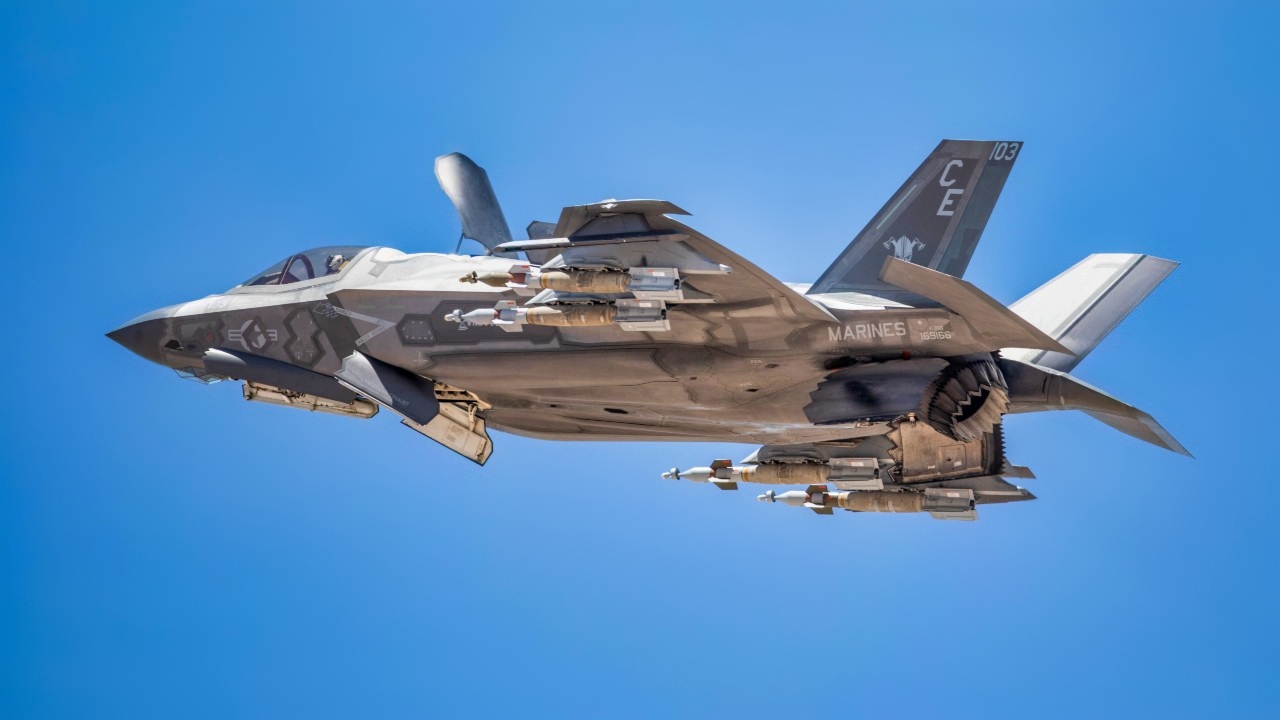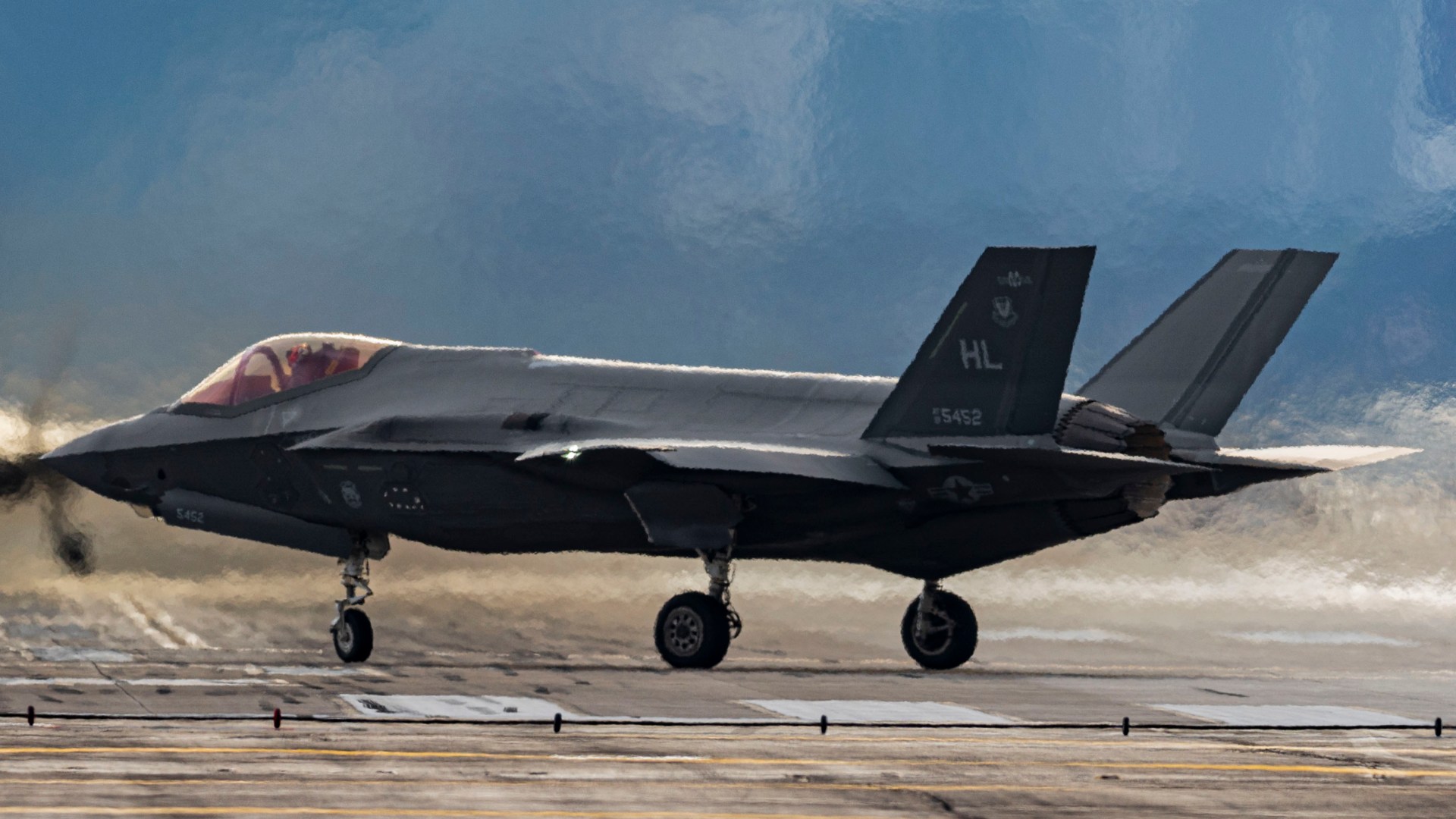Key Points and Summary – Calls to curb F-35 spending collide with a political and industrial juggernaut.
-The program spans all 50 states, supports roughly 300,000 U.S. jobs, anchors allied airpower, and is slated for nearly 2,500 U.S. aircraft with trillions in lifetime sustainment.

F-35 Beast Mode. Image Credit: Creative Commons.
-That scale makes meaningful cuts a non-starter: lawmakers defend local suppliers, partners depend on deliveries, and cancellation would upend logistics, maintenance, and exports.
-Meanwhile, upgrades keep the jet tactically relevant, and foreign demand—now including a potential Saudi buy—expands the coalition’s investment in continuity.
-The result: criticism may shape reforms, but momentum, economics, and strategy ensure the F-35 keeps growing.
Why the F-35 Stealth Fighter Program Will Never Truly Be Cut
Debates over defense budget cuts routinely surface in Congress and the media. It’s a common theme, particularly in the defense space.
And yet despite cost overruns, sustainment challenges, and competing priorities, the F-35 platform remains politically and industrially untouchable.
Why? Because the F-35 is far more than an aircraft program and platform. Sure, half of the rest of the world seems to depend on this now-iconic American stealth fighter platform, but it’s also its own economic ecosystem that spans all 50 U.S. states and dozens of allied nations.
Any attempt to cancel or scale back the program in any meaningful way would affect hundreds of congressional districts, American industrial supply chains, and even allied defense partnerships.
The F-35 program, therefore, is untouchable – at least until the platform reaches the end of its useful life.
Too Big to Fail
The F-35 Lightning II supports three U.S. military services and scores of international partners. According to the Government Accountability Office (GAO), the U.S. Department of Defense plans to procure nearly 2,500 F-35 aircraft over its lifecycle, with estimated costs exceeding $1.7 trillion, of which about $1.3 trillion is associated with operating and sustaining the fleet.
With that scale, investment, and global footprint, the program has become deeply embedded in U.S. defense and industrial policy, as well as allied strategy.
On the domestic manufacturing front, the F-35 is a powerhouse. Maintenance, too. The F-35 program currently has 1,650 suppliers supporting more than 290,000 jobs across all 50 states, according to the F-35 website.

U.S. Air Force Maj. Kristin “BEO” Wolfe, F-35A Lightning II Demonstration Team commander, flies over Kennewick, Washington, during the Tri-Cities Water Follies Airshow Over the River, July 30, 2023. The F-35 Demonstration Team participated in the 2023 Tri-Cities Water Follies airshow and various other events in support of their mission to recruit, retain and inspire new and old generations of Airmen. (U.S. Air Force photo by Staff Sgt. Kaitlyn Ergish)
Other sources, however, put that number even higher: the program supports more than 298,000 direct and indirect jobs, including engineers, technicians, and machinists, across the country.
The jobs are distributed too: major assembly plants and suppliers across Texas, Connecticut, Florida, California, Utah, and beyond.
And given that every U.S. state has a stake in the supply chains, elected officials across both parties have strong incentives to defend the program. Among job-generating programs in America, the F-35 program is by far the strongest, most resilient, and least likely to be challenged. Any changes to the program now would trigger job losses in dozens of states, likely sparking significant political backlash.
In this sense, the F-35 is politically immune. Every defense authorization bill and appropriation cycle sees senators and representatives standing up for the F-35. Attempts to trim procurement or maintenance budgets have been met with resistance.
So, not only is this program unlikely to be canceled any time soon, it’s also probably only ever going to expand.
Beyond jobs, the F-35 is also the world’s most capable stealth fighter—and it will continue to be upgraded for decades to come. That’s a kind of momentum that few other programs can deliver.
The F-35 program not only supports the production of new jets, but also the sustainment (maintenance, spare parts, upgrades), export orders, and ongoing modifications.
Because the program is already deeply integrated and underway, the cost of canceling it is enormous; it would not only mean the end of manufacturing but also the end of an entire industry built to sustain these formidable aircraft. The lost economic activity would hit suppliers, orders from allies, and maintenance.
And perhaps even more importantly, the F-35 underpins U.S. and allied air-dominance strategy: it is, after all, the only fifth-generation fighter currently in large-scale production, giving it strategic value beyond procurement and economics. This fighter is essential for American security.

U.S. Air Force Maj. Melanie “Mach” Kluesner, pilot of the F-35A Demonstration Team, performs aerial maneuvers at the Sun ‘n Fun Airshow in Lakeland, Florida, April 4, 2025. The demonstration team showcases the skill and precision U.S. Air Force pilots and aircraft are capable of. (U.S. Air Force photo by Senior Airman Nicholas Rupiper)
The F-35 Keeps Getting Bigger
A significant recent development in F-35 procurement really brings this entire point home. On November 4, 2025, the U.S. Department of Defense confirmed that Saudi Arabia’s request to buy up to 48 F-35 jets had cleared a key Pentagon hurdle.
This external sale matters for two critical reasons. First, it further expands the program’s economic footprint, meaning the global industrial ecosystem supporting the F-35 now has additional export leverage and allies invested in its continuity and success. Second, it sends a clear signal to American lawmakers that every new sale locks in more jobs, more supplier contracts, and better geopolitical relations with countries that, in another time, were not so close to the United States. The sale is a strategic victory for the United States in every sense.
In other words, the F-35 – despite not being a brand-new platform – is still on an upward trajectory.
The U.S. may be working on its next-generation platform, but the export market for the F-35 keeps on opening up, sustainment contracts keep accumulating, and allied dependencies are deepening.
The F-35 program may well face criticism and calls for reform in the years to come, but there’s no chance it will end any time soon. It will just keep growing.
About the Author:
Jack Buckby is a British author, counter-extremism researcher, and journalist based in New York. Reporting on the U.K., Europe, and the U.S., he works to analyze and understand left-wing and right-wing radicalization, and reports on Western governments’ approaches to the pressing issues of today. His books and research papers explore these themes and propose pragmatic solutions to our increasingly polarized society. His latest book is The Truth Teller: RFK Jr. and the Case for a Post-Partisan Presidency.
More Military
China Has the Missiles to Sink U.S. Navy Aircraft Carriers, But Questions Remain
The P-51 Mustang Was the Best WWII Fighter
The U.S. Navy’s Great Aircraft Carrier Shortage of 2025 Won’t End
The Navy Isn’t Prepared For What’s Coming
Not Made in USA: The Vanguard-Class Missile Submarine Has Just 1 Mission










